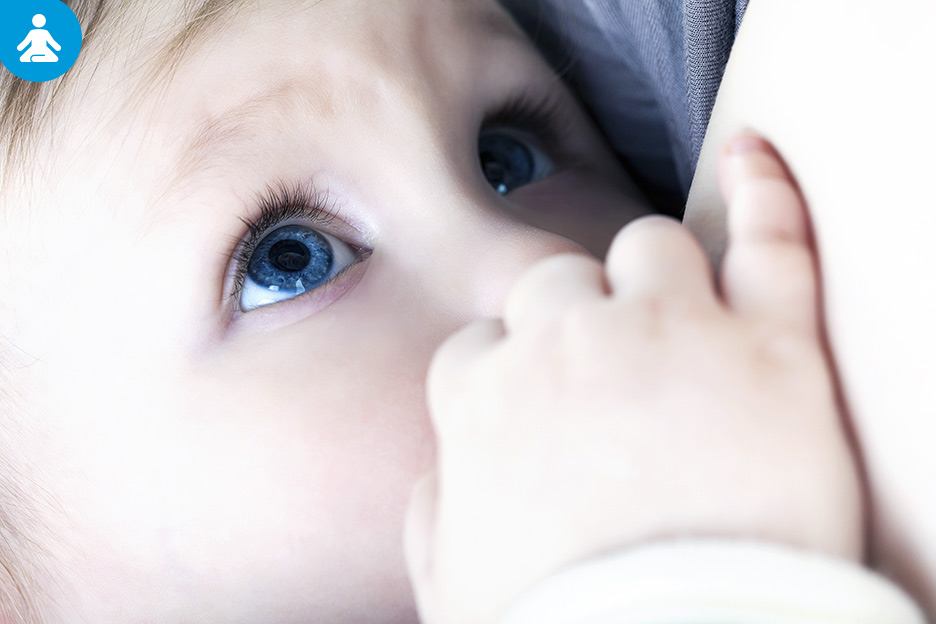Do you breastfeed your infant and have difficulties with it? Breastfeeding can in fact be tricky. However, as every problem has a solution, there are several tips to help you enjoy breastfeeding your child without the inconveniences.

Breastfeeding problems
Breastfeeding has numerous benefits, both for the mother and the child. Feeding your baby with your own milk can be wonderful, but it’s not always trouble-free. This makes certain women give up breastfeeding when they would actually like to continue. So, a better understanding of the problems related to breastfeeding and the way to treat them could benefit a lot of women.
Here is an overview of some common breastfeeding problems and a few handy tips.
Engorgement
Engorgement occurs during a letdown or when the breast produces more milk than the baby can drink. The breast is usually supple. However, an engorged breast is hard and stiff to touch. Slight to severe pain is felt depending on the degree of engorgement. Several steps can be taken to prevent or treat engorgement:
- Feed your baby more frequently.
- Press the breast before feeding to express milk if the nipple is too hard; this will enable the baby to suckle more easily.
- Press the breast or use a breast pump to express milk after breastfeeding if the baby doesn’t drink enough.
- Apply cold or ice compresses on the breasts for 10 to 15 minutes between feeds to reduce the discomfort and pain.
- Apply warm compresses a few minutes before breastfeeding.
- Take acetaminophen or ibuprofen, both of which are completely safe for the baby, if the pain is unbearable.
Fever is not a symptom of engorgement. So, if your oral temperature is above 37.5°C, it is better to see a doctor.
Cracked nipples
Cracks can appear on nipples due to an improper latch. Cracked nipples are rather painful for the mother. But a few tips can help you prevent or heal cracked nipples:
- Consult your breastfeeding counsellor to check whether your breastfeeding position is correct.
- Start feeding with the breast that is less painful.
- Before removing your baby’s mouth from your breast, make sure he or she has stopped sucking by inserting your finger in the child’s mouth.
- Apply a drop of milk on the nipple after feeding and let it dry.
- Apply a lanolin-based cream on the cracks of the nipple after feeding (do not remove it until the next feed so that the nipple is not further irritated).
- Take acetaminophen or ibuprofen, which are both completely safe for your baby, if the pain is unbearable.
Thrush
Thrush is a fungal infection that can develop on the mother’s nipple or breast and in the baby’s mouth. The mother can have it without any symptom in the baby or vice versa. However, both must be treated together to completely heal the infection. An important point to remember is that breastfeeding must continue, even with the infection. Thrush symptoms are as follows:
- burning;
- red, shiny, and slippery appearance of the areola;
- stabbing pain that radiates through the breast at any time;
- small white patches in the baby’s mouth.
Thrush can be treated by gentian violet which is sold over the counter in pharmacies. Before feeding, the drops of this liquid must be applied in the baby’s mouth once a day using a cotton bud. The treatment takes between 4 to 7 days. If the gentian violet has not completely cured the thrush after a week of use, you should see a doctor for a different treatment under prescription. Your pharmacist can also tell you about treatments available for thrush.
Mastitis
Mastitis can be a complication of an improperly handled engorgement. It is a bacterial infection that can develop in one or both the breasts. Mastitis is recognized by symptoms that resemble the flu (e.g., shivering and fever) as well as a red, burning, swollen, and painful breast. If you have these symptoms, you must see a doctor because oral antibiotics are necessary for the treatment of mastitis. Here are few tips to follow if you have this infection:
- Continue to breastfeed despite the infection.
- Make sure that you empty as much milk as possible from your breasts after the feed.
- Start breastfeeding with the less painful breast.
- Apply cold or ice compresses on the breasts during 10 to 15 minutes between feeds to reduce the pain.
- Take acetaminophen or ibuprofen, which are both completely safe for the baby, if the pain is unbearable.
- Feed your baby on both breasts equally to prevent mastitis from developing.
Improper latching on
Improper latching on can lead to several breastfeeding complications, such as painful and cracked nipples. It is essential to change the breastfeeding position to correct the problem. By just taking measures to treat the pain or the cracks, you will find relief, but the cause will not be set right and the problem is likely to return. The baby should open its mouth wide to avoid causing pain to the nipple. To make sure that your baby latches on well, a breastfeeding counsellor can help you.
Only five of the most common breastfeeding problems have been discussed here, but others are also possible. So, a breastfeeding counsellor, as well as a doctor and pharmacist, can help you if you have problems breastfeeding your child. These problems should not dampen your desire to breastfeed because there are solutions to make this experience one of the most pleasant. So, don’t wait before saying “help!”
